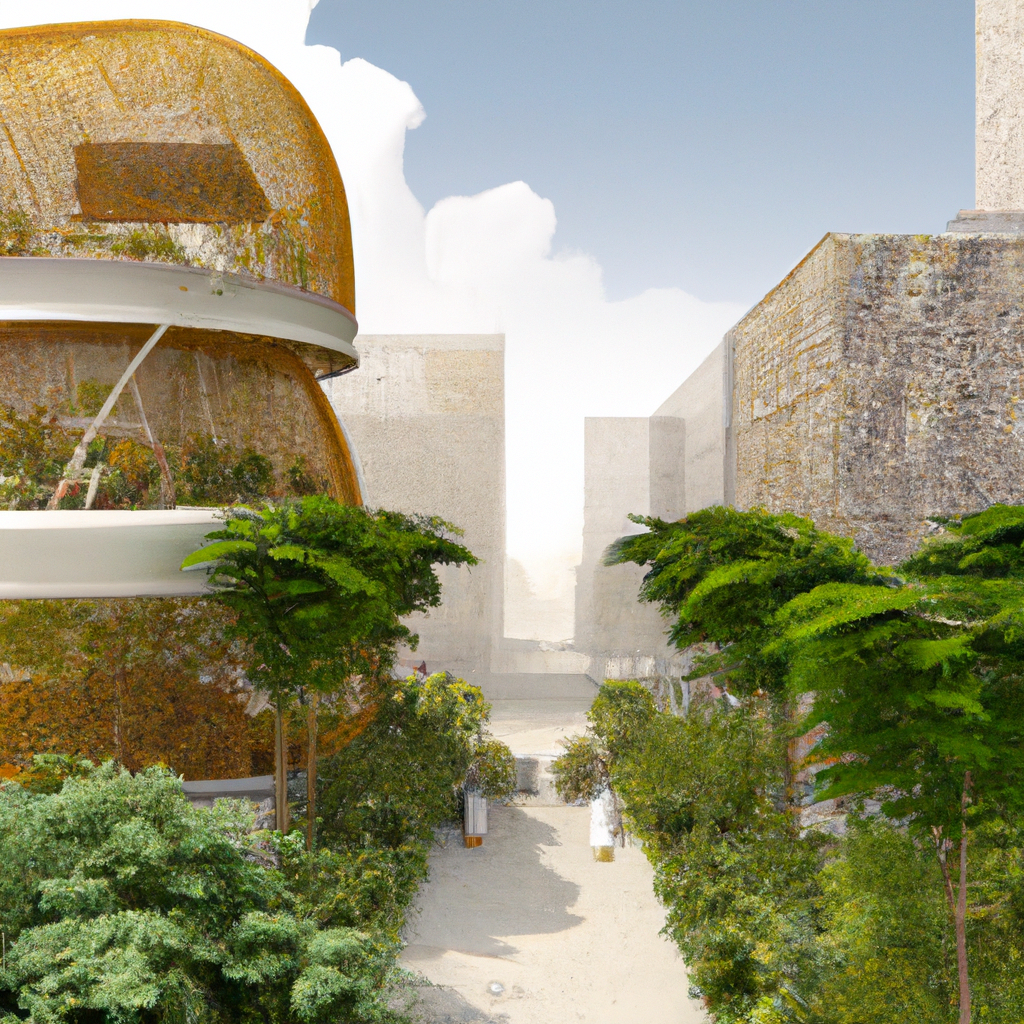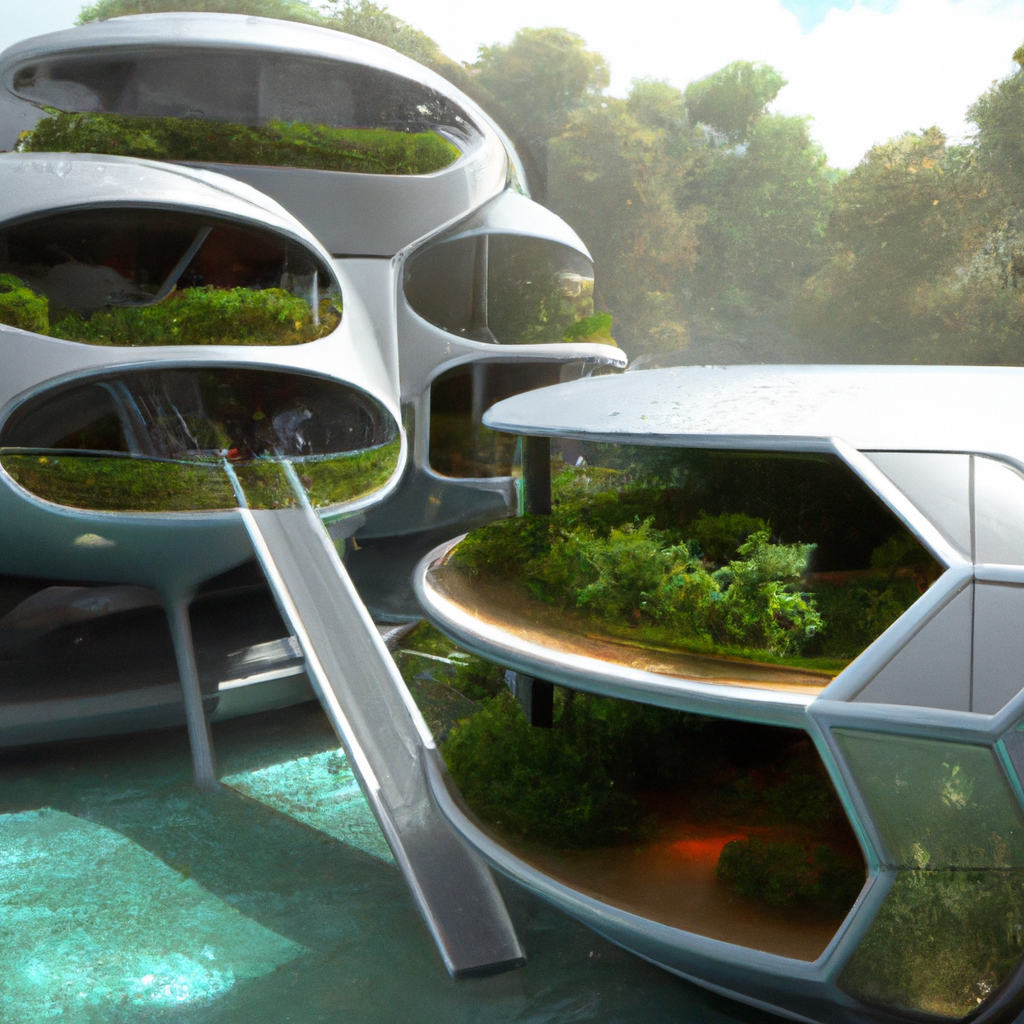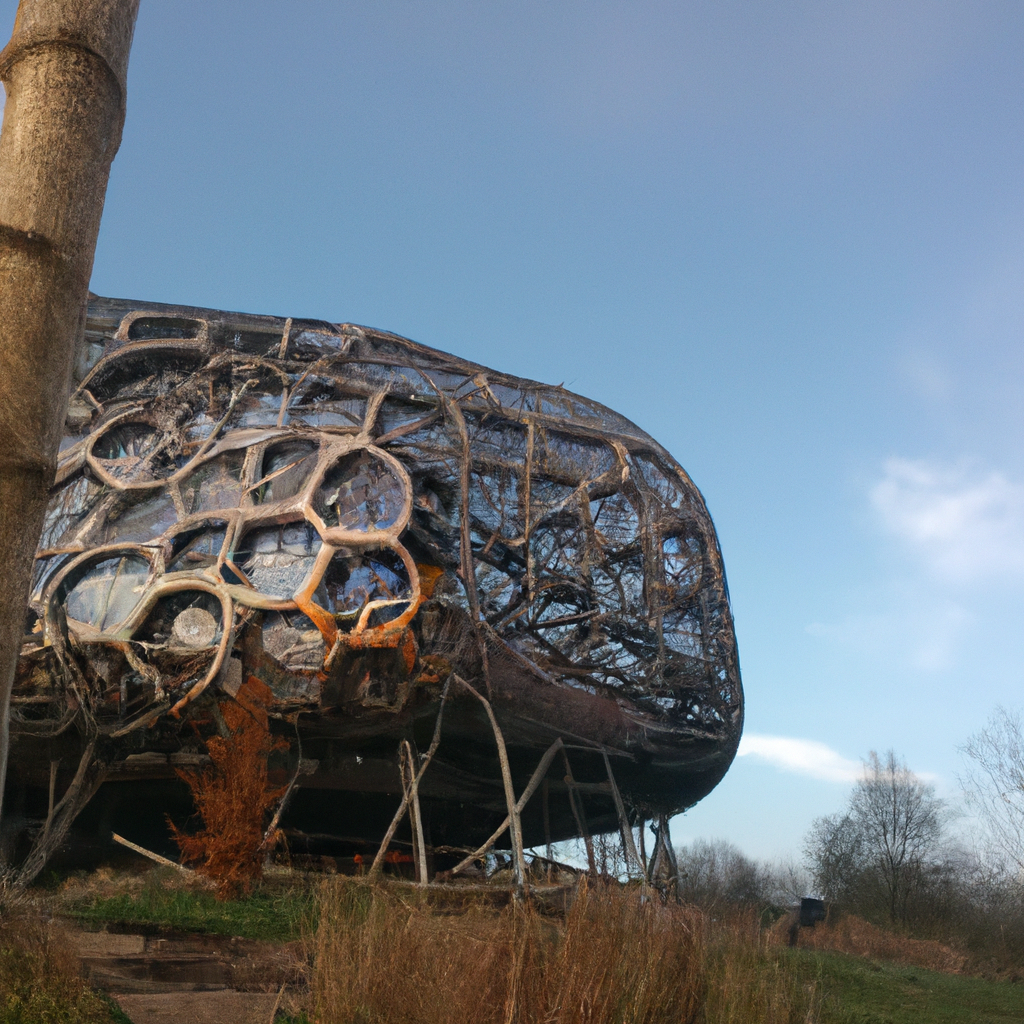
Hemp and AI in Sustainable Architecture
Sustainable architecture involves creating buildings that minimize their environmental impact while maximizing their efficiency and functionality. Hemp, a versatile and eco-friendly plant, has emerged as a promising material for sustainable construction. Meanwhile, artificial intelligence (AI) offers new ways to optimize building design, operation, and maintenance. By combining the two, it is possible to create efficient and sustainable buildings that meet the needs of current and future generations.
Understanding Hemp as a Sustainable Building Material
Hemp has several advantages as a building material. It is renewable, biodegradable, non-toxic, and requires little energy to produce. Hemp can be used to make a variety of products, including hempcrete, insulation, roofing, and flooring. Hempcrete, a mixture of hemp hurds, lime, and water, is gaining popularity as a sustainable alternative to traditional concrete. Hempcrete is lightweight, durable, and has excellent thermal insulation properties.

The Benefits of AI in Sustainable Design
AI can help architects and engineers design buildings that are energy-efficient, comfortable, and functional. AI can analyze building data, such as energy consumption, occupant behavior, and weather patterns, to optimize building performance. AI can also simulate different design scenarios and predict their impact on energy usage, indoor air quality, and other factors. AI-powered tools can help architects and engineers make better decisions that result in more sustainable buildings.
Combining Hemp and AI for Efficient and Sustainable Architecture
The combination of hemp and AI offers unique opportunities for sustainable architecture. Hemp can provide the structural and insulation components of a building, while AI can optimize its design and operation. For example, AI can simulate building performance using different hemp-based materials and compare them to traditional materials. AI can also optimize the distribution of natural light and heat, reducing the need for artificial lighting and heating.
Hempcrete: The Revolutionary Building Material
Hempcrete is a promising material for sustainable construction. Unlike traditional concrete, hempcrete is carbon-negative, meaning it absorbs more carbon dioxide than it emits. Hempcrete is also breathable, which means it can regulate indoor humidity levels and prevent mold growth. Hempcrete has excellent thermal insulation properties, reducing the need for air conditioning and heating. Hempcrete is also lightweight, reducing transportation costs and minimizing the impact on the environment.
AI-based Design Tools for Sustainable Building
AI-powered tools can help architects and engineers design more sustainable buildings. For example, AI can analyze building data to identify energy-saving opportunities, such as optimizing lighting and HVAC systems. AI can also simulate different design scenarios and predict their impact on energy usage, indoor air quality, and other factors. AI can help architects and engineers make better decisions that result in more sustainable buildings.
Hemp-based Insulation: The Superior Alternative
Hemp-based insulation is a sustainable alternative to traditional insulation materials, such as fiberglass and foam. Hemp-based insulation is non-toxic, fire-resistant, and has excellent thermal insulation properties. Hemp-based insulation is also breathable, which means it can regulate indoor humidity levels and prevent mold growth. Hemp-based insulation is easy to install and can be recycled at the end of its useful life.
AI in Energy Management for Sustainable Buildings
AI can help optimize building energy management, reducing energy consumption and costs. AI can analyze building data, such as energy usage, occupancy patterns, and weather forecasts, to optimize the operation of building systems, such as lighting, heating, and cooling. AI can also predict future energy demand and adjust building systems accordingly. By using AI to manage energy, buildings can become more sustainable and efficient.
The Future of Sustainable Architecture with Hemp and AI
The combination of hemp and AI has the potential to transform the construction industry. Sustainable architecture with hemp and AI can create buildings that are energy-efficient, comfortable, and functional. These buildings can help reduce carbon emissions, conserve natural resources, and create a healthier environment for occupants. As technology advances and awareness of sustainability grows, the use of hemp and AI in architecture is likely to become more widespread.
Case Studies: Successful Applications of Hemp and AI in Architecture
Several projects have successfully used hemp and AI in sustainable architecture. For example, the “Cannabis House” in Chile is a fully sustainable building made of hempcrete. AI-powered sensors and controls optimize the building’s energy usage and indoor environment. Another example is the “Living Energy Farm” in Virginia, which uses hemp-based insulation and AI-powered energy management to create a self-sufficient living community.
Challenges and Opportunities in Harnessing Hemp and AI for Sustainable Architecture
The use of hemp and AI in sustainable architecture still faces several challenges, such as limited availability of hemp-based materials and the high cost of AI-powered tools. However, these challenges also present opportunities for innovation and collaboration. By working together, architects, engineers, scientists, and policymakers can overcome these challenges and create a more sustainable future.
The Promise of Sustainable Architecture with Hemp and AI
The combination of hemp and AI offers a promising path toward sustainable architecture. By using renewable and eco-friendly hemp-based materials and AI-powered design and operation tools, buildings can become more efficient, functional, and comfortable. The use of hemp and AI in sustainable architecture is not only beneficial for the environment and society but also financially viable in the long run. As we face environmental challenges, such as climate change and resource depletion, sustainable architecture with hemp and AI can help pave the way toward a better future.





















